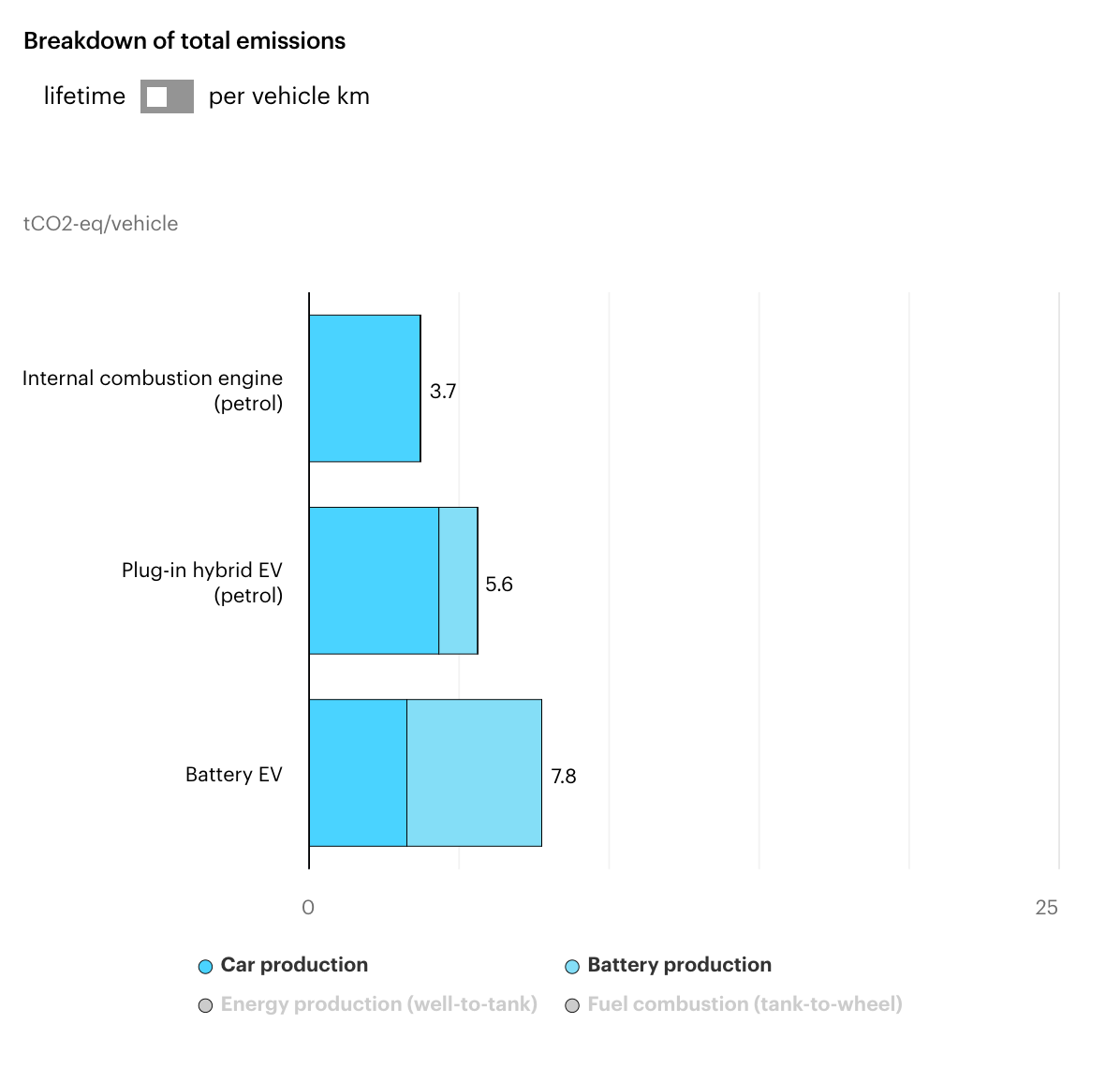last highlighted date: 2024-08-05
Highlights
- But in the last few years, China has been pushing this range much higher. You can see this in the chart below, which comes from a great article by Colin McKerracher, Head of Transport at BloombergNEF.
- One of the reasons why plug-in hybrids are still going strong in China is that their price has fallen dramatically in the last 5 years. The chart below comes from BloombergNEF again.
- The running costs of BEVs will be cheaper than PHEVs. Both are cheaper to run than petrol.
- The International Energy Agency has a useful tool for comparing the life-cycle emissions of petrol, plug-in hybrid, and fully electric cars under various scenarios. You can change many inputs, including the daily mileage, the electricity mix, and the share of the time drivers spend in “electric mode.”
- The rationale is that the carbon footprint of manufacturing a BEV is higher than a PHEV because it has a bigger battery. If you always run the PHEV on electricity, then the carbon footprint of driving the two cars should be the same. Hence the lifetime footprint of PHEVs can be lower.
- The second part can also be true. If you drive very short distances and charge daily so that you never run on petrol, then the emissions from driving should be similar (not exactly the same because it will depend on the efficiency and comparative weights of the cars).
 Source: International Energy Agency (IEA)
But this is not how most drivers operate.
Source: International Energy Agency (IEA)
But this is not how most drivers operate. - So, if you’re incredibly conscientious about charging frequently and never drive distances further than the typical 50-kilometre range of PHEVs then you could make the case that it’s the best climate-friendly car for you. For most people, it’s not as good as a BEV.
- They do have a smaller battery and, therefore, a smaller mining footprint. I’m not concerned about this from a “we’re going to run out of minerals” perspective (which Toyota likes to claim). I also don’t think the mining footprint for clean energy is going to be huge and unsustainable; it’s going to be lower than using fossil fuels. But using materials efficiently is simply a good thing, so that’s a fair argument.
- “For plug-in hybrid electric vehicles, the real-world CO2 emissions were on average 3.5 times higher than the laboratory values, which confirms that these vehicles are currently not realising their potential, largely because they are not being charged and driven fully electrically as frequently as assumed.”